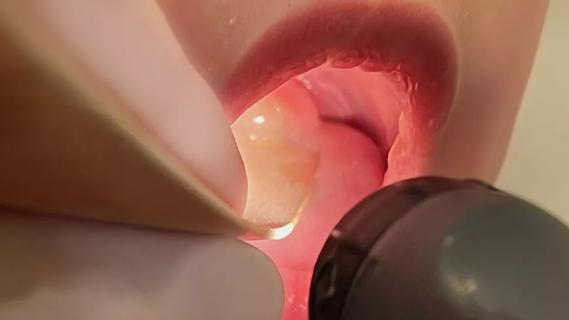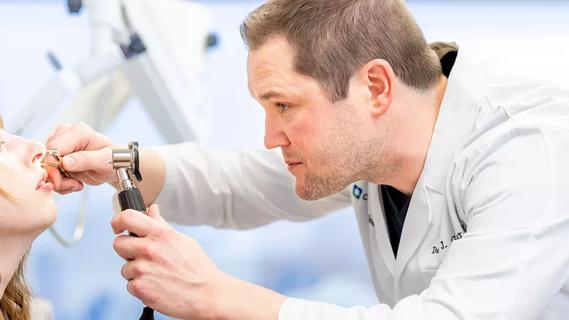Animal scratch may be responsible for MSRA infection that led to implant removal

Nearly two years following medialization laryngoplasty for idiopathic unilateral vocal fold paralysis, a patient returned with an anterior neck infection, as a recent case study in the American Journal of Otolaryngology reports. Complications immediately following medialization laryngoplasty are uncommon. Even rarer are delayed complications such as this.
Advertisement
Cleveland Clinic is a non-profit academic medical center. Advertising on our site helps support our mission. We do not endorse non-Cleveland Clinic products or services. Policy
At the age of 73, the patient underwent successful medialization laryngoplasty with a Silastic implant. She presented with a draining neck infection nearly two years later, and suspected it was caused by a dog scratch to her left clavicular chest. Cultures grew methicillin-resistant Staphylococcus aureus (MRSA) and the patient was started on culture-directed antibiotic therapy.
In spite of these efforts, the patient’s neck was still draining one-month later. The patient underwent laryngoscopy with stroboscopy followed by neck exploration, which revealed a laryngocutaneous fistula communication with the left anterior paraglottic space. The fistula tract was excised and the implant removed.
“There are a number of indications for implant extraction, including bacterial infection, poor vocal outcome, or implant dislodgement/migration,” notes Joseph Meleca, MD, an otolaryngology-head and neck surgery resident studying at the Cleveland Clinic Head and Neck Institute. “Among the infections, roughly 80% are caused by S. aureus.”
Dr. Meleca explains that S. aureus can exist in soft tissues without creating abscesses/infections; however, a foreign body such as the implant inhibits phagocytosis and the intracellular bactericidal effects of leukocytes, allowing for bacterial growth.
The patient continued antibiotic therapy, and at one-month follow-up, had a well-healing wound with no signs of infection. The patient retains acceptable phonation and has not requested a revision procedure.
Advertisement
“Given the lack of resolution with conservative medical management, we felt removing the implant was prudent,” says Paul Bryson, MD, the study’s senior author and Director of the Cleveland Clinic Voice Center and Section Head of Laryngology.
“Infections like this are very rare complications of this procedure,” Dr. Bryson continues. “As far as we know, no other cases in which an infection has developed so late from this cause have been reported in the literature. This case is made even more unique by the formation of a laryngocutaneous fistula, which is the least reported complication, at less than 0.1% of cases.”
Vocal fold paralysis may be idiopathic, as was the case in this patient, or may be caused by tumors, surgery, trauma to the neck, and neurologic or systemic disease. Common symptoms include hoarseness, dysphonia, conversational dyspnea and aspiration. Vocal fold paralysis is fairly common, though its incidence is unknown. Diagnosis requires visualization of the larynx via laryngoscopy. In unilateral vocal fold paralysis, surgical medialization of the immobile vocal fold can achieve glottal closure and improve voice, swallowing and cough-related symptoms.
Advertisement
Advertisement

Case study illustrates the potential of a dual-subspecialist approach

HNS device offers new solution for those struggling with CPAP

Patient with cerebral palsy undergoes life-saving tumor resection

Detailed surgical process uncovers extensive middle ear damage causing severe pain and pressure.

Treatment insights from the ninth recorded EMPD case in 50 years

Surprising X-ray results explain a snoring sound heard during breathing

Prompt surgery was necessary when symptoms drastically increased

Challenging case requires outside-the-box approach